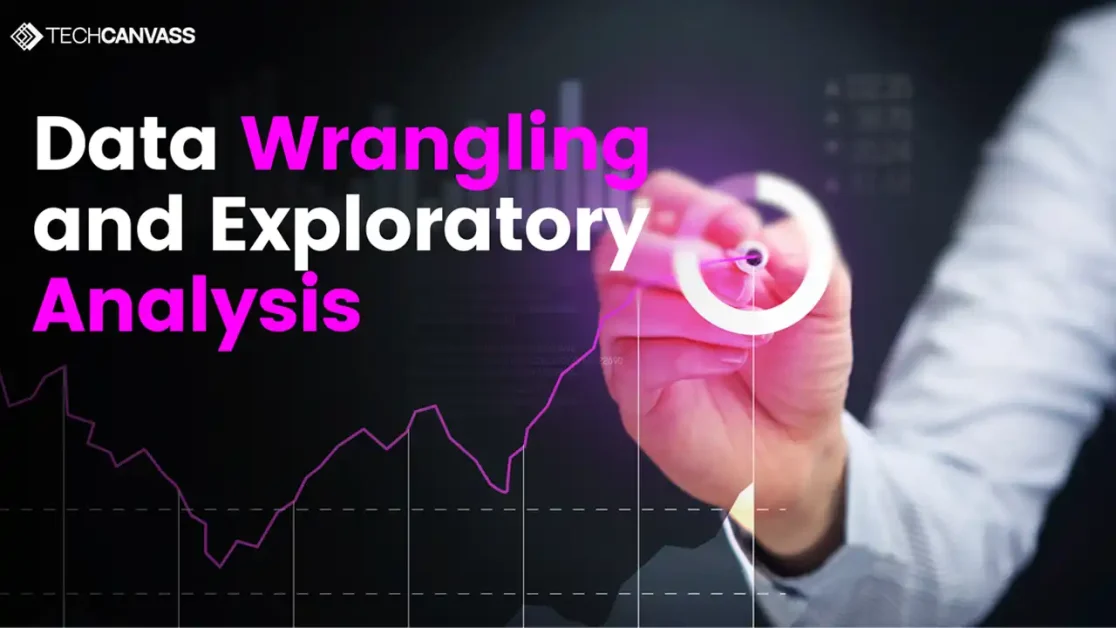The primary purpose of data scientists is to find a suitable data science model for the massive amount of data. A data science model refers to organizing the data elements and extracting meaningful insights from raw, unstructured data. A data scientist may further process the data science model using data wrangling and exploratory analysis, among other scientific technologies and algorithms.
Data wrangling and exploratory analysis are part of data science and play an important role in the data analysis process as they help in properly structuring the data through data detection, data cleaning, data summarizing, etc.
In this article, we take a look at everything you need to know about data wrangling and exploratory analysis.
What is Exploratory Data Analysis?
Exploratory data analysis was first introduced by John Tukey in 1961 and later wrote a book about the concept in 1977. It involves using statistical graphs and graphical visualization methods to analyze and investigate the data sets.
Exploratory data analysis allows data scientists to manipulate the data in order to discover patterns, spot anomalies, test a hypothesis, or check assumptions. It ensures that the data scientists can analyze the data sets beyond the hypothesis testing task and understand the data variables and the relationship among them.
Exploratory Data Analysis with Techcanvass
Exploratory data analysis using Excel is the easiest way in order to start your data analytics journey. Excel has various features and functions which make it a powerful data analysis tool. You can explore more here.
If you want to learn more about exploratory data analysis, check out the new blog on Exploratory Data Analysis Tools, which outlines the steps in your data science journey.
Techcanvass also offers many other professional courses, To know more about our IIBA Certification Courses visit our website.
What Is Data Wrangling?
The data for analysis is rarely in a structure or usable form. The data might consist of errors, omission, and may lack context. In order to structure the data into a desirable format, data scientists use the data wrangling process for data cleaning, data detecting, validation, and structuring the raw data for ease of access and cutting down the time spent for decision making.
The data wrangling process depends upon the data coming from different data sources. For instance, when data scientists perform exploratory data analysis on a computer with limited storage, then the wrangling process may involve extracting a subset of the data.
The Importance of Good Data Wrangling Skills
A good data wrangler has the following skills and knows how to:
- Integrate data from different data sources.
- Resolve data cleansing and quality issues.
- Solve basic transformation problems.
- Enrich the data.
Since getting access to flawless data sets is not possible, good data wrangling skills are almost integral for the data analysis process as well as for the organization in order to efficiently carry out the data science process.
Moreover, many leading tech companies assess the data wrangling skills of the data science candidates by asking them to perform a series of data transformations such as merging, ordering, aggregation, etc using different data science programming languages (R, Python, SQL, etc.)
How to Approach Data Wrangling?
For instance, Over time, data scientists develop a data wrangling toolbox that consists of commonly used data wrangling tasks. So, when a data wrangling solution is required for a task, the data scientist can look into the toolbox to solve the challenges.
However, apart from using the hand-coded data wrangling solutions, the data scientists can also come across a number of products to start the data wrangling process without the need for coding. A few popular companies that offer data wrangling solutions are Trifacta and Datawatch Monarch.
Core Data Wrangling Activities
The data wrangling process typically involves the following six core data wrangling activities.
Discovering
The data discovery step also involves determining what the data is all about in terms of patterns and correlations. This step allows data scientists to get familiar with the data sets.
Structuring
The raw data that first comes in is unstructured and in different shapes and sizes. This step involves restructuring the data by reshaping or merging it for easier analysis.
Cleaning
The raw data is often dirty and consists of errors and omissions that require some fixing. Since missing data or wrong data can affect the accuracy of the data science model, this step involves cleaning the data by making corrections, deleting inaccurate data, and ultimately increasing the data quality.
Enriching
This step involves enriching additional data to augment the existing data. A data scientist may consider certain questions such as what other information can supplement the existing data for better decision making? Or what new data can be derived from the existing data? And so on.
Validating
Data validating involves verifying the data’s consistency, quality, and security. It also involves taking a closer look at the data to confirm its accuracy and make sure the data makes sense statistically.
Publishing
Once all the above steps are done, the final outputs of the data wrangling efforts. Steps are pushed down in the data pipeline for analytical use.
If you would like to read our article on What Is Data Wrangling, here is the link.
Difference Between Data Wrangling and Exploratory Data Analysis
Data scientists use exploratory data analysis to investigate and analyze the data sets. On the other hand data wrangling is used for cleaning the complex data, detecting errors and omissions, and structuring the data in a more presentable manner.
Conclusion
Exploratory data analysis and data wrangling are both processes of data science analysis. Therefore, They play an integral role in structuring the raw data into a more manageable and accessible format. It allows data scientists to clearly analyze the data sets to reach a final data science model.
In this article, we have covered the basics of data wrangling and exploratory data analysis. If you liked the article, let us know in the comments below.
FAQs
Both EDA and data wrangling are interrelated. hence, Data wrangling is a part of the data science process, which is sitting in between exploratory data analysis (EDA) and data acquisition.
EDA is an essential process for data scientists to analyze the data before reaching final assumptions. So, It can help data scientists to identify errors, abnormal events, promote a better understanding of patterns within the data, and help in understanding the data set variables.
An EDA is a thorough investigation in order to uncover the underlying structure of a data set and it is useful as it helps in discovering the trends, patterns, and relationships among the data set variables.
Exploratory data analysis (EDA) using data visualization refers to using statistical graphs or other exploratory graphs in order to analyze the data sets. Some of these graphs may include pie charts, box plots, histograms, scatter plots, correlation matrix, and much more.
Explanatory visualization refers to visuals created for explanatory purposes of certain workings of phenomena, whereas exploratory visualization refers to visuals created for analytic purposes in order to explore and investigate a problem.
Exploratory data analysis is the process of analyzing and structuring the data. It is easy to use by data scientists and further involves identifying trends and patterns within the data. However, data visualization is the process of putting the data into visual formats such as graphs, tables, or charts for better analysis and interpretation.
Excel is one of the EDA tools for in-depth data analysis. Excel offers many built-in functions and add-on tools.
Data wrangling refers to transforming the format of the data by converting the raw data into a more suitable and easy to access format, whereas data cleaning as the name suggests refers to removing inaccurate data from the data sets to make it error-free. The process of data cleaning is performed before any other data wrangling activity.
The primary function of data wrangling is to transform or map the raw data into another data format with the intent to make the data more appropriate for analytical purposes.
A few of the data wrangling tools are as follows:
Tabula, OpenRefine, R, Data Wrangler, csvkit, Python & Pandas, Mr. Data Converter



